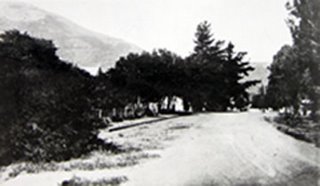HAPPY PETRUS REMEMBERS

Happy Petrus, who was later postman in Somerset East, is an old pupil of the William Oates Memorial School. He started school in 1936 when Mr Goodman was the principal, and was taught Sub A and Sub B in the Hope Church by his teacher, Mrs Johnson.
He says you learn a lot about life as postman, and that some people were happy to get letters while others don’t want them at all. Others quarrel about them.
He remembered the first poem he learnt at school, and he recited it to us, first giving the title.
AS OUMA KOM KUIER
As ouma kom kuier
Dan bring sy koekies mee
Ons oupa is nog beter
Dit is speelgoed wat hy gee.
Tant Hessie glo dat kinders
Nie moet bedorwe word
Sy gee gewoonlik
‚n Koppie, piering of ‚n bord.
Oom is ‚n terggees
Maar tog hou ons van hom
Hy gee ons elk ‘n sjilling
As hy op kuier kom!
For readers not conversant with Afrikaans, a loose translation is:
When granny comes visiting she brings us cakes. Grandpa is better because he gives toys. Aunt Hessie says children mustn’t be spoilt, and gives a cup, a saucer or a plate. Our uncle is a tease, but he’s the one we really like because he gives us each a shilling when he comes visiting!




